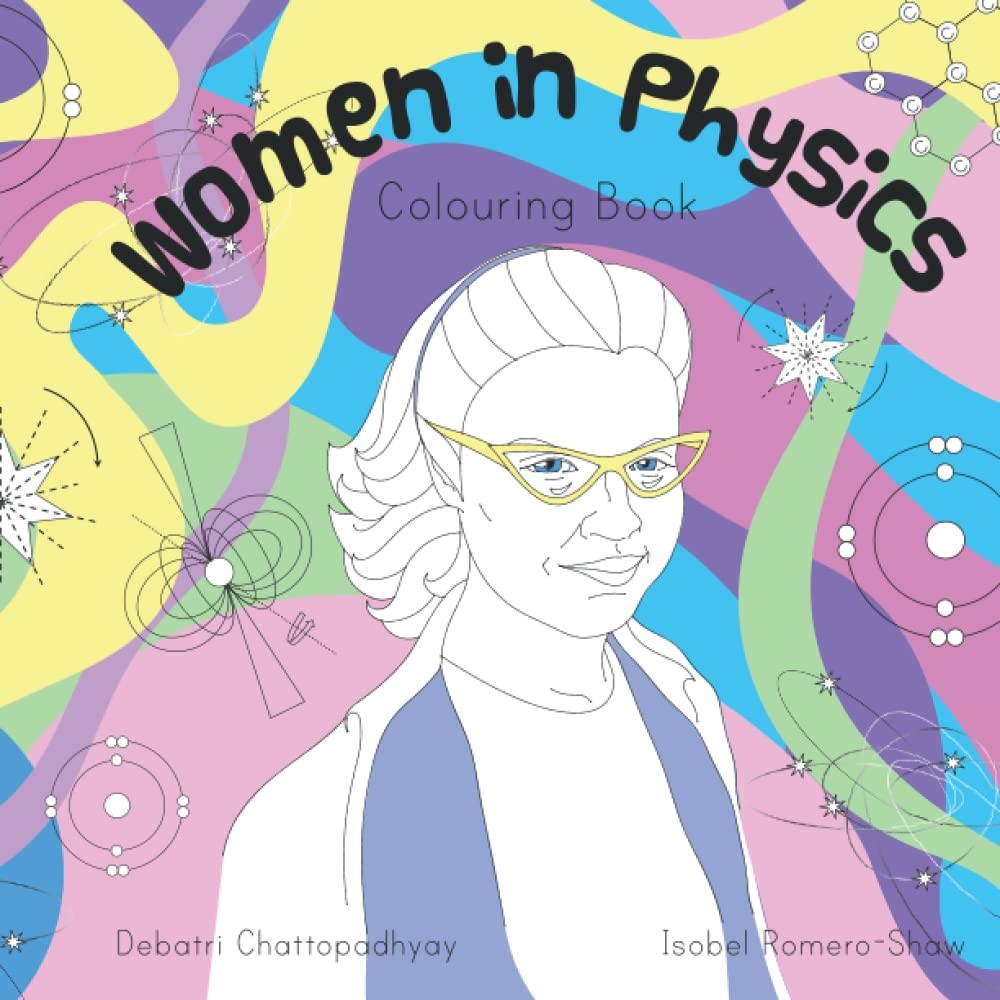Astrophysicists launch colouring book for future scientists

Swinburne PhD candidate, Debatri Chattopadhyay, was one of two astrophysicists to create a colouring book to encourage more girls to become scientists.
In summary
- Two Melbourne-based astrophysicists from the ARC Centre of Excellence for Gravitational Wave Discovery (OzGrav) have collaborated on a colouring book called Women in Physics
- The recently launched book encourages girls to follow their passions in science and learn about the amazing women who changed the course of history with their physics research
Swinburne’s Debatri Chattopadhyay and Isobel Romero-Shaw from Monash University – who are both completing their PhDs in astrophysics with OzGrav – are determined to educate children and young people about the pivotal scientific discoveries and contributions made by women scientists. They also want to encourage more girls, women, and minorities to take up careers in the male-dominated fields of Science, Technology, Engineering, Mathematics and Medicine (STEMM).
Debatri, who is originally from India, came to Australia pursuing her PhD at Swinburne University in 2017. She was acutely aware of the lack of women in STEMM fields, as both of her parents worked in biological sciences. ‘My father is a scientist, so I was aware that this was a field I could go into, and he would talk about amazing biologists like Barbara McClintock, but there was almost no representation of female scientists on TV or in newspapers,’ she recalls.
‘This colouring book will help children learn about the colourful lives and brilliant minds of these amazing women scientists. As a colouring book, it encourages creative minds to think about scientific problems – which is very much needed for problem solving,’ says Isobel, who designed the book and illustrated each of the featured scientists. ‘These women, who made absolutely pioneering discoveries, used their creativity to advance the world as we know it.’
‘I did intense research for the biographies of the women featured in the book and at every nook and crevice was amazed at the perseverance they showed. It is for them and countless others, unfortunately undocumented, that we can do what we do today,’ says Debatri. ‘With Christmas approaching, this book is a perfect gift for young children who have a hunger for science. It’s both fun and educational!’ she added.
Last year, both Isobel and Debatri were also selected to participate in Homeward Bound, a global program designed to provide cutting-edge leadership training to 1,000 women in STEMM over 10 years. To raise awareness of climate change, this journey will take Isobel and Debatri all the way to Earth’s frozen desert, Antarctica.
In their ‘day jobs’, Isobel tries to figure out how the collapsed remains of supergiant stars – black holes and neutron stars – meet up and crash together. She does this by studying the vibrations that these collisions send rippling through space-time – these are called gravitational waves.
Debatri is involved in doing simulations in supercomputers of dead stars in binaries or in massive collections of other stellar systems – called globular clusters. Her detailed theoretical calculations help us to understand the astrophysics behind the observations of gravitational waves and radio pulsars, as well as predict what surprising observations might be made in the future. She has recently submitted her thesis.
-
Media Enquiries
Related articles
-

- Astronomy
- Science
Swinburne appoints new Director of Innovative Planet Research Institute
Leading geodesy expert, Professor Allison Kealy, has been appointed as the inaugural Director of Swinburne University's Innovative Planet Research Institute.
Monday 22 April 2024 -

- Astronomy
- University
OzGrav 2.0: A ‘new era of astrophysics’ launched at Swinburne
The next phase in the world-leading ARC Centre of Excellence for Gravitational Wave Discovery, dubbed 'OzGrav 2.0', launched this week at Swinburne University of Technology.
Wednesday 17 April 2024 -

- Design
- Astronomy
- Technology
- University
Swinburne ‘Rock Muncher’ takes part in Australian Rover Challenge
A multidisciplinary student team from Swinburne University of Technology competed in the 2024 Australian Rover Challenge held in Adelaide, South Australia.
Thursday 11 April 2024 -
.jpeg/_jcr_content/renditions/cq5dam.web.256.144.jpeg)
- Astronomy
New JWST observations reveal black holes rapidly shut off star formation in massive galaxies
New research showcases new observations from the James Webb Space Telescope that suggest black holes rapidly shut off star-formation in massive galaxies by explosively removing large amounts of gas...
Tuesday 23 April 2024 -

- Astronomy
NASA’s JWST probes an extreme starburst galaxy
An international team of astronomers has used NASA’s James Webb Space Telescope to produce the highest-resolution image of spectacular exploding stars ever seen...
Thursday 04 April 2024

